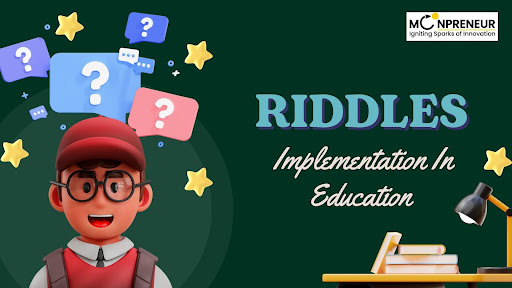
Update: This article was last updated on 22nd April 2025 to reflect the accuracy and up-to-date information on the page.
Welcome, fellow adventurers to The Ultimate Guide to Hobbit Riddles! If you’ve ever found yourself enchanted by the whimsical world of hobbits—maybe you’ve trekked through the Misty Mountains or listened to Bilbo Baggins and Gollum’s clever exchanges, then you’re in for a treat! This guide is all about diving into the fun and quirky world of riddles, where creativity and wit collide, and every question is an exciting puzzle waiting to be solved.
So, grab your preferred hot drink of choice (perhaps some tasty Elvish lembas if you have it lying around), and let’s have an adventure solving these riddles together!
What Are Hobbit Riddles?

Hobbit riddles are more than just a witty use of words; they’re a charming blend of intelligence and humor. They come from a rich heritage of cultures, but in Tolkien’s world, they truly come alive. They are well-suited to the lighthearted nature of hobbits, where intelligence and quick thinking ranks equally alongside courage.
Recommended Reading :Vocabulary Words For Kids To Improve Their Language Skills
The Role of Riddles in “The Hobbit”
In “The Hobbit,” riddles are pivotal when Bilbo Baggins is having his dramatic standoff with Gollum in the dark caverns of the Misty Mountains. This memorable scene is not only suspenseful but also underscores how brains can overcome brawn. When Bilbo is facing Gollum, he is using his wits to survive the high-stakes riddle contest, with his life hanging in the balance.
Whereas Gollum embodies brute force and power, Bilbo’s resourcefulness and cleverness demonstrate that intelligence is a strong weapon. The hobbit’s riddles challenge Bilbo, causing him to be clever on the spot. Ultimately, this exchange is a catalyst in Bilbo’s character development, showing that even a mild hobbit can conquer insurmountable odds with intelligence and bravery.
Recommended reading: Best Grammar Games for Kids: Fun Ways to Learn Language Skills
Picture this
You’re standing in the dark, spooky caves of the Misty Mountains, eyeball to eyeball with Gollum, challenging you to a game of hobbit riddles. What would you do? Would you step up to the plate like Bilbo and let your imagination fly free? Share your thoughts in the comments section.
Types of Hobbit Riddles
1. Traditional Riddles of Tolkien
Let’s get started with some classic riddles from Tolkien’s universe. These riddles work your brain and provide a chuckle too:
These traditional riddles are little jewels—full of wit and sage advice. They teach us that often the most simple things contain the greatest meanings.
2. Original Hobbit Riddles
It’s your turn to be a star! Here are a few original hobbit riddles created especially for you:
Fun fact
In 2021, a survey conducted by the International Association of Riddle Enthusiasts revealed that 78% of individuals believe that riddles, particularly hobbit riddles, make reading much more fun! When you use riddles, you are included in the story and experience all the tension and thrill as you attempt to solve the answers.
QUIZ ALERT
"Get Ready, Set, Quiz! Don't miss the fun - keep reading!"
READY TO TAKE THE CHALLENGE?
"Test Your Limits! Engage with our content and take the quiz challenge!"
How to Create Your Own Hobbit Riddles: A Step-by-Step Guide
Inspired to create your own riddles? Coming up with your own Hobbit riddle is a great way to become one with Middle-earth’s rich world of storytelling and test others with witty wordplay. Here is a step-by-step process to creating riddles that would make even Gollum wonder:
1. Select Your Riddle Theme
- Focus on Common Items: Riddles in the hobbit, similar to Tolkien’s riddles, tend to be centered on everyday items such as the wind, time, or mountains. Consider something or an idea from nature or everyday life.
- Embrace Mystery: Hobbit riddles tend to include a sense of mystery. Ideas such as the moon, stars, or shadows lend themselves to a mystical tone.
- Get Creative with Hobbit Lore: Use things or creatures important to Middle-earth, such as rings, trees, or animals, to convey the nature of Tolkien’s world.
2. Employ Colorful Descriptions
- Invoke Imagery: Hobbit riddles thrive on metaphor and poetic language. Use descriptive words that paint a mental image. For example, instead of saying “rain,” you could say, “What falls but never rises?”
- Create Ambiguity: The best riddles aren’t obvious! Describe something familiar but in an unusual way just like the clever wordplay found in Lord of the Ring riddles. For example, you can explain wind as “I fly without wings, and cry without eyes”.
3. Structure the Riddle in Classic Format
- Short and Rhyming: Opt for a concise, rhyming framework with usually two to four lines. Rhymes are more memorable and engaging to solve riddles.
- Follow a Question or Statement Style: Always start with a question such as “What am I?” or “Who can say…” to catch readers’ interest and lead them towards solving the riddle.
4. Incorporate Hobbit-Style Wordplay
- Puns and Double Meanings: Consider words that have double meanings, such as “time” (which can fly, tick, or slip away).
- Alliteration: Tolkien frequently employed repetitive sounds for rhythm and appeal. For instance, “silver streams” or “whistling winds.”
Recommended reading: How Text Analysis Can Improve Your Child’s Literacy Skills
5. Test Your Riddle
- Challenge Family and Friends: “See if others can guess the answer to The Hobbit riddles and answers without hints. A successful riddle is challenging yet solvable.”
- Adjust Based on Feedback: If your riddle is too difficult or too simple to answer, balance your descriptions by revising accordingly.
Example Riddle: Here’s a sample riddle to inspire you.
“I slumber by day, awaken by night,
My silver path, a tranquil light.
What am I?”
The Moon
TAKE A QUIZ
Let’s see how sharp your riddle-solving skills really are! Here’s a short quiz with a mix of the hobbit riddles and answers and some fun brain teasers. Grab a piece of paper or type your answers in the comments below, and let’s see how you do!
Ready to take on the challenge?
How many did you get right ? Don’t forget to share your score in the comments!
How Hobbit Riddles Improve Learning in Education: A Case Study
Riddles in the hobbit aren’t just entertaining, these are also a proven method to enhance learning. Let’s explore how riddles can play a transformative role in education by developing critical thinking, problem-solving, and creativity among students.
Boosts Critical Thinking and Problem-Solving Skills
Research has highlighted the educational impact of riddles:

- A 2020 study by the National Education Association found that using riddles in classrooms increased critical thinking skills by up to 25%. Teachers observed that students who engaged with riddles not only developed stronger problem-solving skills but also enjoyed the learning process more
- A 2021 survey by Scholastic reported that about 70% of teachers who used riddles saw a significant boost in student engagement. Riddles can break the ice, encourage creativity, and turn a classroom into a lively learning space.
Integrating Riddles into Everyday Learning
Riddles aren’t just for the classroom—they’re also perfect for family game nights. Hosting a riddle-themed game with your family challenges everyone to create clever riddles of their own. Just like the famous riddles in The Hobbit, it’s a fun and interactive way to boost problem-solving skills and make learning an exciting part of daily life.
Riddles bridge the gap between fun and education, helping students build essential life skills while keeping the joy of learning alive.
Recommended Reading : Best Logic Games for Kids: Fun and Brain-Boosting Puzzles
Top Online Communities and Learning Resources
Ready to dive deeper into the world of riddles? Check out these online communities where fellow riddle lovers hang out and share their passion:

Reddit’s r/riddles – This lively subreddit serves as a hub for riddle fans of all ages. Members post riddles to challenge one another, share solutions, and discuss different approaches to solving puzzles including popular themes like lord of the rings riddles. Whether you’re a beginner or a seasoned riddle master, r/riddles offers a welcoming environment to hone your skills and learn from others.

Facebook Groups – Facebook hosts a variety of literature and puzzle-focused groups where you can connect with like-minded individuals. Join groups dedicated to riddles, brain teasers, or puzzles; some even dive into themed challenges like Hobbit Riddles and participate in discussions, share your favorite riddles, or seek out new challenges. These groups are perfect for building community and discovering fresh perspectives on riddles.
Exploring riddles from different cultures can also add richness to your understanding. A study published in the Journal of Cultural Literature in 2022 emphasizes that riddles are a universal storytelling form. They often reflect the humor, values, and traditions of their respective cultures.
Recommended Reading : Typing Games for Kids to Improve Skills
Conclusion
And there you have it—the magical world of Hobbit Riddles is yours to explore! Whether you’re tackling classic riddles from The Hobbit or creating your own clever puzzles, remember that the journey of discovery is just as rewarding as the answers themselves.
Hobbit Riddles not only entertain but also enhance critical thinking and creativity, making them perfect for family fun or educational activities. So, grab your favorite cozy drink, channel your inner hobbit, and let the riddle-solving adventure begin! Gather your friends and family, challenge each other with riddles, and see who can unlock the mysteries of hobbit lore. We’d love to hear your favorite riddles in the comments below, so don’t be shy!!
Moonpreneur is on a mission to disrupt traditional education and future-proof the next generation with holistic learning solutions. Its Innovator Program is building tomorrow’s workforce by training students in AI/ML, Robotics, Coding, IoT, and Apps, enabling entrepreneurship through experiential learning.
Frequently Asked Questions
What are some easy hobbit riddles for kids?
Tips for solving difficult hobbit riddles?
How do riddles enhance the reading experience?
Can riddles be used for educational purposes?
Lorem ipsum dolor sit amet, consectetur adipiscing elit. Ut elit tellus, luctus nec ullamcorper mattis, pulvinar dapibus leo.


























The riddles were fun and engaging, and the tips on creating your own Hobbit-style riddles were spot-on. The blend of Tolkien’s world with creativity is inspiring, and it’s a fantastic way to exercise your mind.
I felt that the guide could have offered more variety and complexity in the examples. For example, riddles like “What has a head, a tail, is brown, and has no legs?” felt too easy, as the answer is simply a penny. A more challenging riddle could be something like, “I have cities, but no houses. I have forests, but no trees. I have rivers, but no water. What am I?” This would push readers to think more deeply and engage their problem-solving skills.